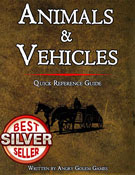Large beast (animal), unaligned
Armor Class 9
Hit Points 15 (2d10+4)
Speed 40 ft.
Proficiency Bonus +2
Proficiency Bonus +2 (5th Edition Advanced Mode)
| STR | DEX | CON | INT | WIS | CHA |
|---|---|---|---|---|---|
| 16 (+3) | 8 (-1) | 14 (+2) | 2 (-4) | 8 (-1) | 5 (-3) |
Skills (suggested) Perception +1
Senses passive Perception 9
Challenge 1/8 (25 XP)
Trample (suggested). If the camel runs at least 20 feet as part of its movement, it can then use this action to trample all targets in a 10-foot square. The targets must succeed on a DC 12 Dexterity saving throw or be knocked prone and suffer 8 (2d4+3) bludgeoning damage. On a successful save, the creature takes no damage, isn’t knocked prone, and is pushed 5 feet out into an unoccupied space.
ACTIONS
- Bite. Melee Weapon Attack: +5 to hit, reach 5 ft., one target. Hit: 5 (1d4+3) bludgeoning damage.
- Spitting (Recharge 5-6, suggested). The camel spits at a target it can see within 5 feet of it. The target must succeed on a DC 9 Dexterity saving throw or be blinded until the end of the camel’s next turn.
DESCRIPTION
A camel is a large, hump-backed beast that can survive in harsh desert environments. It has long legs, a long neck, and a small head with large eyes and ears. Its fur is usually brown or tan, but can vary in color and pattern. It has four sharp canine teeth that it uses to bite enemies or food. It can also spit a foul-smelling liquid from its mouth to deter predators or annoy people.
COMBAT
A camel is not a very aggressive animal, but it will defend itself or its herd if threatened. It can bite with its powerful jaws, or kick with its strong legs. It can also use its spit as a weapon, aiming for the eyes or mouth of its target. A camel spit can cause temporary blindness or nausea, giving the camel a chance to escape or attack.
HABITAT / SOCIETY
A camel is a social animal that lives in groups called herds. A herd can consist of up to 30 camels, led by a dominant male. The herd travels together in search of food and water, often covering long distances in harsh climates. A camel can go for days without drinking, thanks to its ability to store water in its hump and blood cells. A camel can also eat almost anything, including plants, seeds, bones, and even leather.
ECOLOGY
A camel is an important animal for many cultures and civilizations, especially in desert regions. It is used as a mount, a pack animal, a source of milk, meat, wool, and leather, and a symbol of wealth and status. A camel can carry up to 300 pounds of cargo for up to 25 miles per day. A camel can also adapt to different temperatures and altitudes, making it a versatile and reliable companion.
Camels can be used as mounts or pulling animals for vehicles.
The statistics are detailed in the D&D 5e Animals & Vehicles reference guide. Just have a look at the preview on DrivethruRpg.
